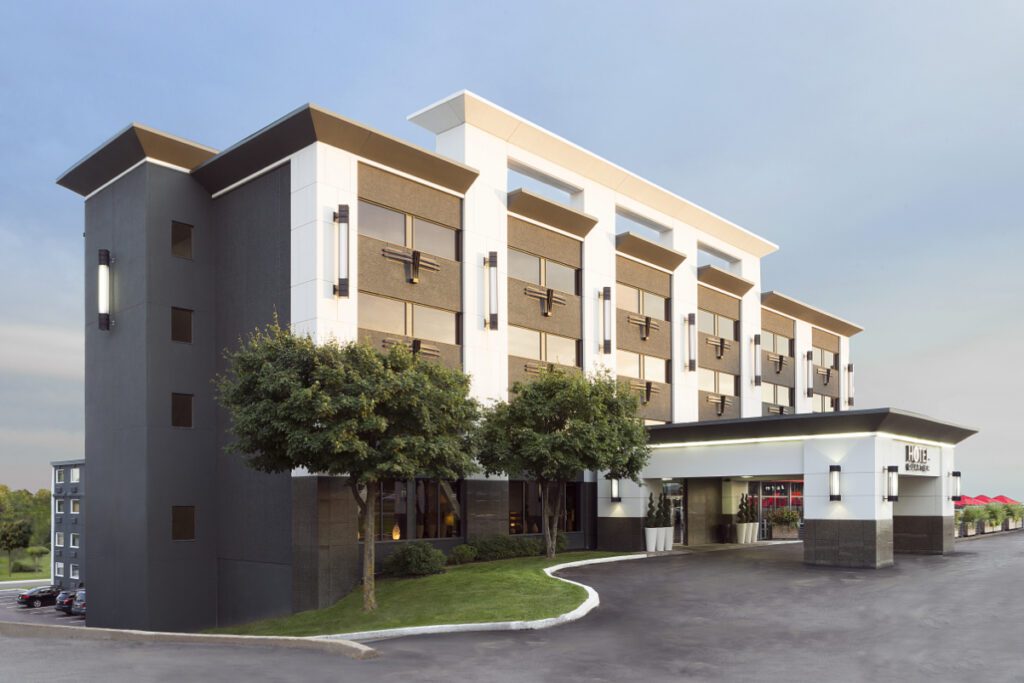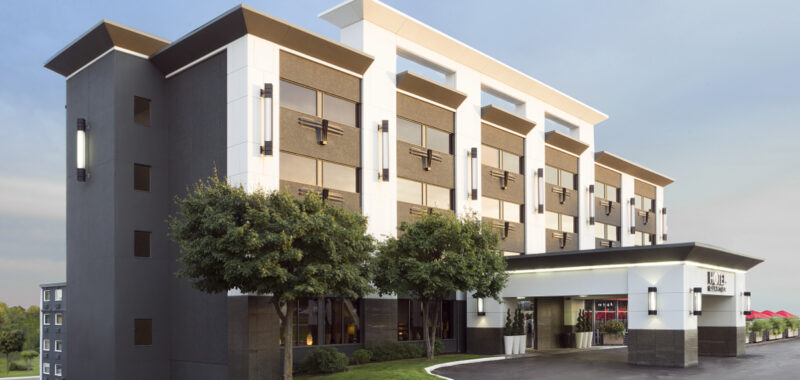
Skift Take
Choice Hotels recently saw its U.S hotels continue to perform roughly 10% above 2019 levels in revenue per available room. Its executives believe that trend may roll on next year.
Choice Hotels reported a softening in domestic revenue per available room in the second quarter – a trend other hotel companies have also noted in recent weeks. But Choice said some of the weakness was offset by demand for its extended-stay brands in the U.S. and upscale brands overseas.
Choice Hotels lowered its full-year 2024 revenue per available room [RevPAR] growth outlook to a range of -3.5% to -1.5% â down from its previous forecast of flat to 2% growth.
Patrick Pacious, Choice’s president and CEO, pointed to a “normalization” after the post-pandemic boom. However, the company maintained its adjusted EBITDA guidance range of $580 million to $600 million for the full year.
Choice Hotels executives spoke optimistically about next year’s potential during an earnings call Thursday.
“We did see in the U.S GDP growth last quarter and that generally translates into a positive RevPAR [revenue per available room] environment,” said Pacious.
“The really positive news in [the U.S. jobs report last week] was that labor force participation rate went up. When consumers have a job, they tend to have more confidence to travel. Labor force participation rate is one of the most highly correlated factors we look at.”
Wealth Gap?
Choice’s second-quarter revenue per available room was below the 2.2% year-over-year increase that all U.S. hotels on average saw, according to CBRE Research.
That difference between Choice’s performance versus the national average illustrated a “wealth gap” in hotel demand. Choice Hotels brands are heavily weighted in the U.S. to more economy and premium economy brands, which have seen weaker demand from pinched middle-class consumers.
Yet Choice Hotels still sees overall strength relative to how it was doing before the pandemic. Its second-quarter revenue per available room performance was 11% higher than pre-pandemic.
“As the travel trends normalize when compared to 2019 levels, we expect our domestic RevPAR performance for the second half of the year to maintain the pace with the first six months of the year and exceed 2019 levels by approximately 10 percentage points at the midpoint of our guidance,” Pacious said.
Extended Stay
The company’s focus on upscale and extended-stay properties appears to be paying off, with domestic franchise agreements for these segments increasing 8% year-to-date.
The WoodSpring Suites brand, in particular, saw a 10% growth in unit count to 246 hotels. “The WoodSpring Suites brand represents over two-thirds of all the rooms under construction in the economy extended stay segment,” Pacious said.
The hotel franchisor’s newest extended-stay brand, Everhome Suites, has four hotels now open and 65 domestic projects in the pipeline.
International Growth
International expansion is also gaining momentum, with the number of rooms increasing 1.6%. Hotel openings doubled in the quarter, year-over-year.
Choice Hotels’ international rooms pipeline has more than tripled compared to the prior year.
They are making progress onboarding over 4,000 rooms in France under a franchise agreement with Xenitude residential hotels, which will double their hotel footprint in the country
They recently executed an agreement in Japan with the hotel real-estate investment trust affiliated with Hoshino Resorts to convert over 2,200 rooms to their Comfort brand portfolio. The rooms are expected to be onboarded within two months.
The international portfolio is more heavily weighted towards revenue-intense brands, with about 96% in midscale and above segments.
“We have more than doubled our international EBITDA over the past 2 years,” Pacious said.
An Eye on M&A
The company also bolstered its liquidity position, increasing its revolving credit facility by 17% to $1 billion and refinancing other debt on more favorable terms.
The executives didn’t explicitly state a reason for increasing liquidity beyond improving their financial position. However, they did mention that their strong balance sheet and liquidity position (which was about $530 million available at the end of June) gives them “dry powder” for potential acquisitions.
They also noted that while there aren’t many large transformational opportunities for mergers and acquisitions, they bolstered their capacity to pursue smaller acquisitions either on their balance sheet or in a measured way with regard to debt.
Choice’s Second-Quarter
- Adjusted EBITDA grew 6% to a record $161.7 million.
- Net income rose 3% to $87.1 million.
- Its global hotel pipeline increased by 22% to over 114,000 rooms.
Accommodations Sector Stock Index Performance Year-to-Date
What am I looking at? The performance of hotels and short-term rental sector stocks within the ST200. The index includes companies publicly traded across global markets, including international and regional hotel brands, hotel REITs, hotel management companies, alternative accommodations, and timeshares.
The Skift Travel 200 (ST200)Â combines the financial performance of nearly 200 travel companies worth more than a trillion dollars into a single number. See more hotels and short-term rental financial sector performance.
Read the full methodology behind the Skift Travel 200.

